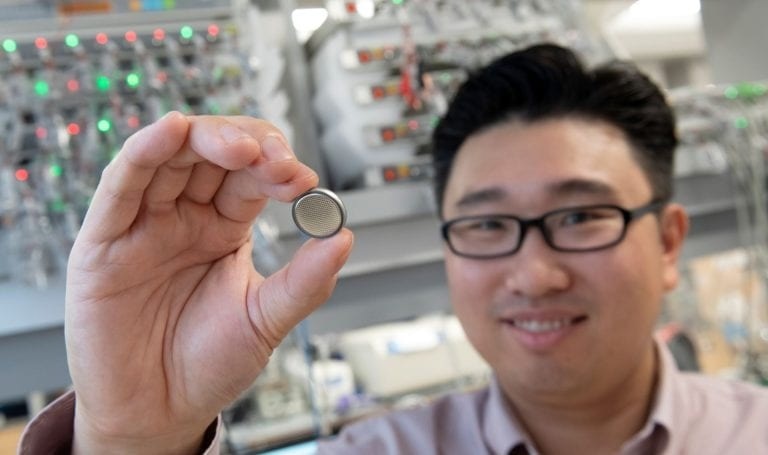Due to the widespread use of lithium-ion batteries in consumer devices, vehicles, and electrical storage facilities, researchers have been attempting to increase their strength, efficiency, and durability.

“This project, which relied heavily on some of the world’s most powerful microscopy technologies and advanced data science approaches, clears the way for the optimization of high-nickel-content lithium-ion batteries,” says Huolin Xin, UCI professor of physics and astronomy. “Knowing how these batteries operate at the atomic scale will help engineers develop LIBs with vastly improved power and life cycles.” Image Credit: Steve Zylius / UCI
Researchers at the University of California, Irvine and Brookhaven National Laboratory carefully examined high-nickel-content layered cathodes, which are thought to be promising parts in next-generation batteries, as described in a report published today in Nature Materials.
The UCI-led research used super-resolution electron microscopy and deep machine learning to analyze minute alterations at the interface of materials stacked together in lithium-ion batteries.
We are particularly interested in nickel, as it can help us transition away from cobalt as a cathode material. Cobalt is toxic, so it is dangerous to mine and handle, and it is often extracted under socially repressive conditions in places like the Democratic Republic of Congo.
Huolin Xin, Study Co-Author and Professor, Physics and Astronomy, University of California, Irvine
But for the shift to completely materialize, battery designers must be aware of what transpires inside the cells during repeated discharges and recharges. It has been observed that the high energy density of the nickel-layered lithium-ion batteries causes the component materials of LIBs to degrade chemically and mechanically very quickly.
The researchers employed a transmission electron microscope and atomistic simulations to study how oxidation phase transitions affect battery materials, resulting in flaws on a surface that is otherwise very uniform.
Xin added, “This project, which relied heavily on some of the world’s most powerful microscopy technologies and advanced data science approaches, clears the way for the optimization of high-nickel-content lithium-ion batteries. Knowing how these batteries operate at the atomic scale will help engineers develop LIBs with vastly improved power and life cycles.”
The study, which was supported by the US Department of Energy, made use of resources at the UC Irvine Materials Research Institute and the Brookhaven National Laboratory in Upton, New York.
Chunyang Wang, a postdoctoral researcher in physics and astronomy at UCI, Tianjiao Lei, a postdoctoral researcher in materials science and engineering at UCI, along with Kim Kisslinger and Xuelong Wang from Brookhaven National Laboratory, were co-authors of the study.
Journal Reference
Wang, C., et al. (2023) Resolving complex intralayer transition motifs in high-Ni-content layered cathode materials for lithium-ion batteries. Nature Materials. doi:10.1038/s41563-022-01461-5.